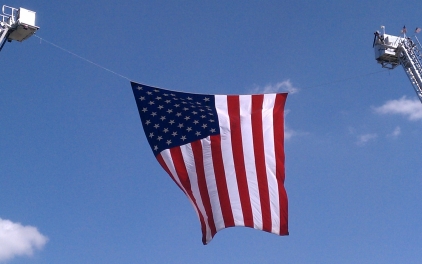| AUGUST UPCOMING EVENTS: Aug. 11: Soybean Management Field Days, Hildreth Aug. 12: Soybean Management Field Days, Elgin Aug. 13: Soybean Management Field Days, Shelby Aug. 14: Soybean Management Field Days, Arlington Aug. 20: Midwest Soil Health Clinic, ENREC Aug. 25: SCAL Field Day, Clay Center Aug. 26: Midwest Soybean Production Clinic, ENREC Aug. 27: Midwest Corn Production Clinic, ENREC |

Independence Day: As we approach July 4th this year, I can’t help but think how different it may be on many levels, particularly from all that’s occurring in our Country. Our flag is one of the most beautiful things to me because it represents so much…many willingly put their lives on the line for my freedom and freedom for all of us…many dying to do so. The flag and patriotism, gratitude for this Country, those who serve(d), and families left behind means much to me (most likely to many of you as well). My hope and prayer is that this Independence Day also provides an opportunity for families to talk about our independence, freedoms, patriotism, respect, and that freedom isn’t free. I hope that in spite of all the challenges and division occurring that we would pause, remember, and be grateful that we live in the greatest Nation in the world! We are so blessed!
July 4th Food: To ensure you’re staying safe from food-borne illness and for fun family recipes, check out this information from our Food experts: https://food.unl.edu/july-food-calendar#4th!
Crop Update: Corn and soybean have been rapidly growing in spite of having difficulty in closing canopies this year. Dr. Roger Elmore shared a paper with me on high winds altering corn leaf architecture (will share more next week). So it may be part of what we’re seeing in addition to hybrid differences? Many continue to contact me about bacterial leaf streak and there’s nothing outside of hybrid tolerance to do for it. Seems like hail occurs weekly in some part of the State. Resource: https://cropwatch.unl.edu/hail-know/assess-my-damage.
Chiggers: For whatever reason, chiggers, ticks, mosquitoes all find me. There’s all kinds of information/hypotheses available as to why some people tend to get bites more than others. Never have chiggers gotten me as bad as this year! As bites tend to peak around the 4th of July with more families outdoors, here’s some things to consider. Chiggers (also known as redbugs or jiggers) are the immature stages of red harvest mites. They tend to hang out in moist, tall grassy/weedy areas such as along streams, road-side ditches, forested areas, lawns. But they can also hang out in moist and dry lawns with a lot of trees too. They bite humans and other animals including pets. Eggs are laid on clusters on plants and the larvae hatch and wait for their host to come along. They latch onto clothing, shoes, and fur and can hang on while working their way to the skin (often to an area where clothing is tighter like around socks, undergarments, back of knees and under armpits). They actually don’t burrow into human flesh. They only survive on a warm-blooded host for around 3 days before falling off to molt for the next stage in life cycle which doesn’t feed on humans.
They have needle-like mouthparts that allow them to pierce the skin then inject saliva that dissolves body cells in the area to aid them in feeding. Thus, they don’t feed on blood but liquefied cells. The feeding creates an allergic reaction in which many see swelling, intense itching, and small, clustered, red bumps (which can become larger welts in some). To prevent chigger bites, avoid sitting or lying on the ground when picnicking or working outdoors. Wear loose-fitting clothing and apply a repellent like DEET to shoes, socks, and pants before going into areas more favorable for chiggers. It’s also wise to take a hot shower with plenty of soap as soon as possible after being outdoors and launder clothing with hot water before re-wearing. Also launder any blankets/sheets being used outdoors. If you receive bites, rubbing alcohol can be used then apply an anti-itch cream to help reduce itching. Thankfully chiggers can’t live in the home but they can become dislodged in bedding and on floors, so laundering bedding and vacuuming is also wise.
Keep lawns and shrubs well-manicured, particularly where adjacent to dwellings. If you tend to have problems with chiggers in your lawn, they can be reduced from 75-95% for several weeks with a liquid treatment of bifenthrin. Be sure to read and follow all label instructions.


































